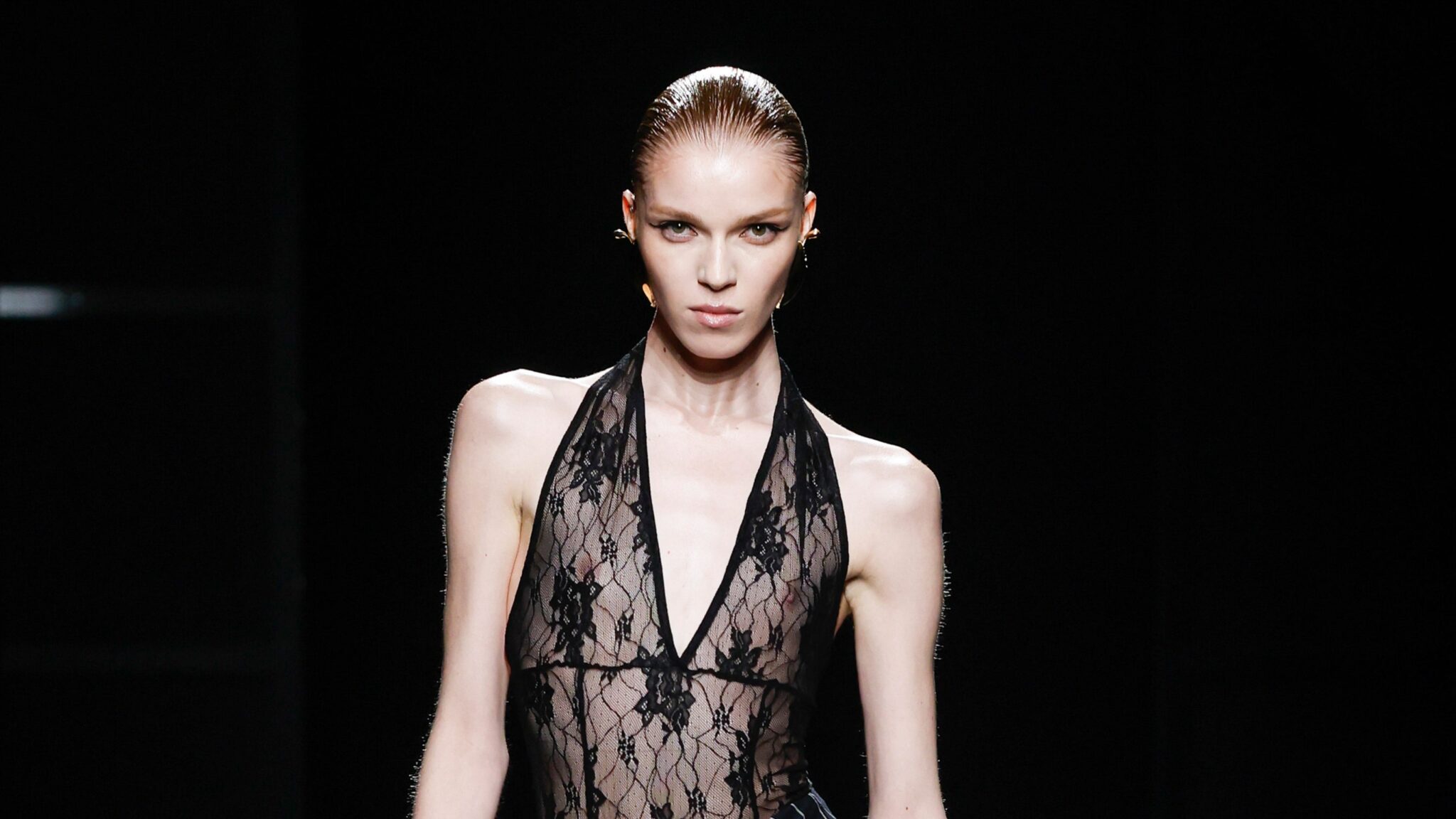Harris Reed noted how he worked on this collection. “I think I can say with confidence: hate it or love it, this is the Nina woman for me in 2024,” he said. “She’s this fierce French woman from an outside perspective, but that’s what makes me that way and hopefully makes it special.”
There’s been a major code shift at Nina Ricci since Reed took over a little over a year ago. So flamboyant! So delicious! Never has the chic socialite we tend to associate with the house felt so precarious. Furthermore, his continued and admirable dedication to creating a broad mosaic of models (in size, as well as trans and non-binary) proves how designers can make a positive impact beyond just the clothes.
While his first two collections recalibrated our perception of Nina Ricci, today’s lineup somehow fell back on played-out Parisian tropes. An ’80s polka dot mini dress or a ruffled tweed jacket with hot pants might end up as a millennial party or red carpet dressing, but they added little to the brand’s evolution.
In fairness, flowing chiffon and glossy crocodile skin equated to femme fatale seduction, while tailored pinstripe suits provided a masculine counterpoint to the curvier draped dresses. Where the bows of previous seasons were poof, new versions were as stiff as helicopter blades, outlining or merging the hem of a skirt with stiletto heels. A fresher version came in the form of a hood, or hood, which was worn to exude glamor rather than protection.
This idea originated in a 1960s photo of model-actress Suzy Parker by Richard Avedon. Reed, who has moved to Paris, says he now has a better idea of Parisian attitudes. Perhaps this explains the toned down exuberance (runway support remained, however). What is missing is the spontaneity, the carelessness, the… je ne sais quoi.





